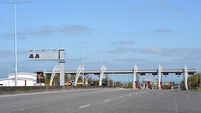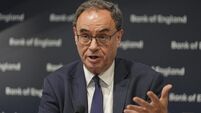John Whelan: The sky will not fall in but inflation remains far off target

Consumers have been dealing with soaring prices for food and other items. Consumer price inflation in Ireland is still running at four times the European Central Bank's 2% target. Picture: Denis Minihane.
While the post-pandemic surge in Ireland’s economy was driven by exuberant export sales, both will struggle to be maintained, but there are still some reasons for cheer as we enter 2023.
It’s clear the economy is slowing and recession is looming amongst our main trading partners. But, if the much-anticipated recession arrives, just how short or long it may be is anyone's guess.














